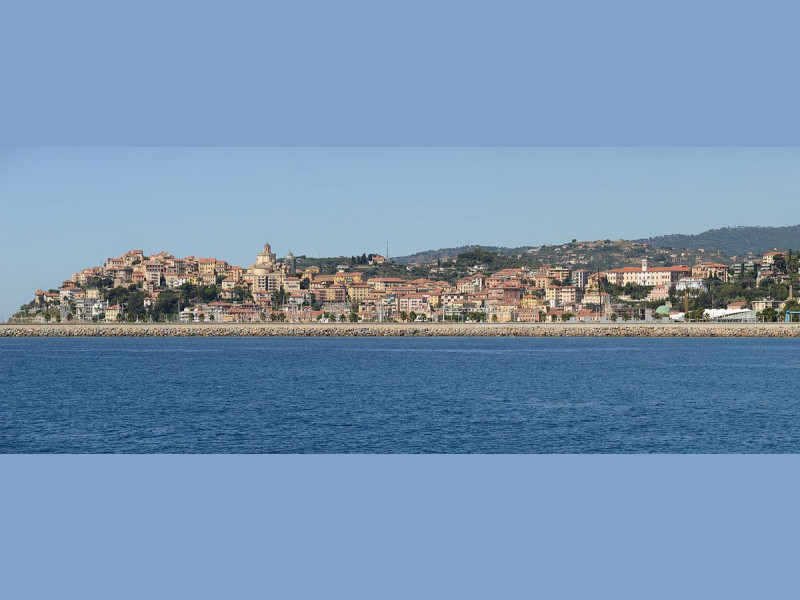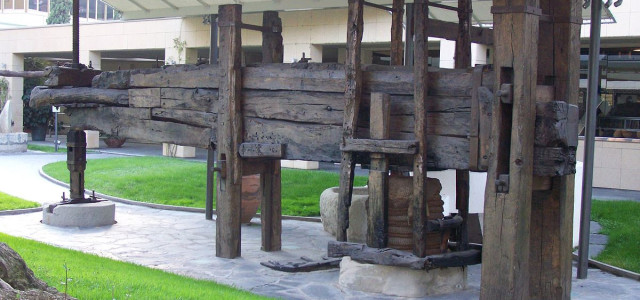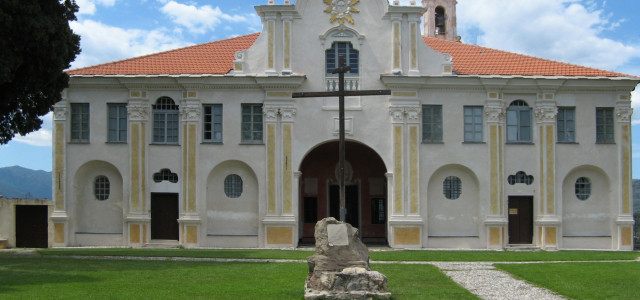Imperia
Imperia ( listen ) is a coastal city and comune in the region of Liguria, Italy. It is the capital of the province of Imperia, and historically it was capital of the Intemelia district of Liguria. Mussolini created the city of Imperia on 21 October 1923 by combining Porto Maurizio and Oneglia and the surrounding village communes of Piani, Caramagna Ligure, Castelvecchio di Santa Maria Maggiore, Borgo Sant'Agata, Costa d'Oneglia, Poggi, Torrazza, Moltedo and Montegrazie. Imperia is well known for the cultivation of flowers and olives, and is a popular summer destination for visitors. The local Piscina Felice Cascione indoor pool has hosted numerous national and international aquatics events. History The name of Oneglia may have its roots in the pre-Roman settlement of Pagus Unelia, on the hill of Castelvecchio, which was probably one of the sex oppida of the Liguri. This spawned Ripa Uneliae, a village down on the coast probably on the site of the modern-day Borgo Peri. Modern Oneglia became established on its modern site around 935AD, possibly after it was destroyed by the Saracens; in 1100 it became a fief of the Diocese of Albenga. In 1298 Oneglia became part of the fiefdom of the Doria family of Genoa; the famous admiral Andrea Doria (1466–1560) was born in the town. The Dorias sold the town to Emmanuel Philibert, Duke of Savoy in 1576, and Oneglia essentially remained a Savoyard enclave in the Republic of Genoa until Italian unification. Nonetheless, it was on the front line in the wars of the House of Savoy; it was seized in 1614 and 1649 by the Spaniards and in 1623 and 1672 by the Genoese. In 1692 it had to repulse an attack by a French squadron; in 1744–45 it was again occupied by the Spaniards, and in 1792 bombarded and burned by the French. Porto Maurizio was a Roman settlement, Portus Maurici, which, though named in the brief maritime itinerary appended to the Antonine Itinerary, must be an interpolation in manuscripts of that third century document, since it is named after Saint Maurice, leader of the Theban Legion who were not martyred until 286 and could not have been memorialized until the Christianized Empire of the fourth century. It became a Byzantine port after the Gothic Wars of the 6th century, then passed to the Order of Saint Benedict. It was subject to the counts of Turin in the 11th century, and then to the marchesi of Clavesana. Boniface of Clavesana sold the town to the Republic of Genoa in 1288 in return for a yearly payment, as part of Genoa's expansion into western Liguria. In 1354 it became the seat of the Genoese vicar of the western Riviera. The town prospered even though control of Genoa passed between the French, the Duchy of Milan, and the Spanish. At the Congress of Vienna in 1815, it was awarded to the Kingdom of Piedmont-Sardinia, before finally joining a united Italy in 1861. Mussolini created the city of Imperia on 21 October 1923 by the union of Porto Maurizio and Oneglia and the surrounding village communes of Piani, Caramagna Ligure, Castelvecchio di Santa Maria Maggiore, Borgo Sant'Agata, Costa d'Oneglia, Poggi, Torrazza, Moltedo and Montegrazie. Economy The economy of Imperia is based on tourism, food industry (olive oil and pasta), a specialized agriculture (olive groves and flowers in greenhouses) and on trading and harbour activities. The seaside tourism represents an important aspect of the economy of Imperia. Geography Imperia consists of the two historical districts of Porto Maurizio and Oneglia, which lie on either side of the River Impero that gives its name to the city. Porto Maurizio is situated on a peninsula to the west of the river, stretching along the coastline. It is the more colourful and wealthy district of the city, threaded by narrow lanes known as carrugi, and its economy centres around the tourist industry. It was a possession of Genoa from the 13th century. Oneglia (Inéja in Ligurian) lies on an alluvial plain to the east of the Impero, and with its working port is the more modern and industrial of the two districts. At its centre lies Dante Square, from which radiate some of the principal roads of the city. Climate Imperia experiences a warm Mediterranean climate (Köppen climate classification Csa). Notable sights Porto Maurizio The classical Cathedral of San Maurizio, built between 1781 and 1832 by Gaetano Cantoni, is the largest church in Liguria. (www.parrocchiasanmaurizio.it) Old Town, called Parasio. Convent of Santa Chiara. First established in 1365, the existing structure dates from 1741. There is a small Naval Museum in the town. Oneglia Museo dell' Olivo (The Museum of the Olive). Villa Grock Church of San Giovanni Battista, built in 1739–62. Montegrazie Church of Santa Maria Maggiore. Shrine of Nostra Signora delle Grazie Transport Imperia is served by the Autostrada A10 motorway, also known as L'Autostrada dei Fiori which runs along the Lugurian coast between Milan and Ventimiglia on the French border. The road crosses the city via a series of high viaducts and mountain tunnels over the valley. Two junctions serve the city, one in the west close to Porto Maurizio, and another in the east above Oneglia. The A10 also forms part of European route E80. Bus services across the Province of Imperia are operated by the public transport body Riviera Trasporti (RT). The coastal Genoa–Ventimiglia railway line runs through Imperia. There are two railway stations serving the two centres of Imperia, Imperia Porto Maurizio and Imperia Oneglia railway stations. The railway line was originally constructed in 1872, and because its narrow coastal route was confined by the sea and long tunnels under the rocky coastline, it was built as a single-track railway. In recent years, work has been underway to convert sections of the line to double-track operation. A new section of track is under construction between Andora and San Lorenzo al Mare, diverting the line inland via a series of new tunnels and viaducts. When opened, it will replace the old coastal route and the two stations in Imperia will close, to be replaced by a central Imperia railway station, situated to the north of the current Oneglia station. The new double-track route was scheduled for completion at the end of 2009, but currently remains unfinished. Famous residents Natives of Imperia: Pellegrino Amoretti, assistant secretary to Charles V, Holy Roman Emperor Saint Leonard of Port Maurice Andrea Doria(1466–1560), the famous admiral Carlo Amoretti (1741–1816) Maria Amoretti (1756–1787) Giovan Pietro Viesseux (1779–1863), writer and publisher, was born in Oneglia it:Giovan Pietro Vieusseux Edmondo de Amicis (1846–1908), novelist Giulio Natta (1903–1979), Nobel Prize winner in 1963 Francesco Moraldo, Creppo di Triora (1906–2001), Righteous Among the Nations in 1999 Renato Dulbecco (1914), Nobel Prize winner Alessandro Natta (1918–2001) Luciano Berio (1925–2003) Luca Fiuzzi (1984), footballer Others: Grock (1880-1959), entertainer International relations Twin towns – Sister cities Imperia is twinned with: Friedrichshafen, Germany Rosario, Argentina Newport, Rhode Island, USA Notes This article incorporates text from a publication now in the public domain: Chisholm, Hugh, ed. (1911). Encyclopædia Britannica (11th ed.). Cambridge University Press. References External links City of Imperia website (Italian) Province of Imperia website (Italian) Imperia Mare Association website (Italian) (English) (French) Museo dell' Olivo website (Italian) (English) (German) (French) Language school website (Italian) (English) (German) (French)




